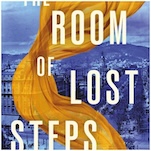Film Friday: Comparing Ritchie’s Sherlock Holmes to Conan Doyle’s Stories
I don’t think I’ve ever been spotted defending a Guy Ritchie movie, and I’m not yet convinced that I’ll defend his latest. It’s premature to say, since I haven’t yet seen it. But I’m eager to defend its subject, the characters of Sherlock Holmes and Dr. John Watson, not from Ritchie but from those who think the filmmaker is taking vast liberties. Maybe he is—we’ll see—but not everything in the trailer that’s causing some people to roll their eyes is a whole-cloth invention.
The studio calls the film “a dynamic new portrayal,” by which they mean it’s ass-kickin. To some eyes this ass-kickery, these fisticuffs, this witty banter, this sexy woman, these knees-to-the-groin, and this punchy sidekick may not fit the detective stories as we’ve come to know them, but at least some of the fault belongs to the previous film and TV adaptations of Sir Arthur Conan Doyle’s stories, most of which were sanitized to exclude Holmes’ drug use or to focus on his deductive skills instead of his other qualities. They often portray Watson as a passive observer and make Holmes seem more like a Vulcan than the brilliant but frequently unpredictable oddball in the text. Ritchie’s adaptation may take liberties in the opposite direction—I can’t remember the original Watson kicking down any doors or punching his good friend in the face after a particularly snarky comment—but based on what I’ve seen in the trailer, the characters in the new film may be no further from Conan Doyle’s portraits than a portly and somewhat dim-witted Watson has been for decades, or a Holmes who quietly thinks but never engages in physical combat. In some respects, Ritchie may be closer to the real deal.
What’s more, Conan Doyle published his stories in serial form, in magazines, before he bound them into novels and collections, and detailed illustrations were printed alongside them. The stories and pictures were popular entertainment, with exciting events, twisting plots, and dramatic character traits. They were forerunners of comic books and graphic novels, and their goals were pretty similar to those of the modern film franchise. Thrill. Entertain. Conan Doyle even killed off Holmes—or so it seemed—in a literal cliff-hanger, but he brought him back a few years later with dubious explanations about what really happened at Reichenbach Fall. Justifications for releasing new episodes of a popular series aren’t unique to Hollywood.
With that in mind, I’ve paired the seemingly untraditional aspects of the new film with selections from the stories, with handy links into the original text. Compare. Contrast.
Sherlock Holmes, Bare-Knuckle Brawler
In the trailer we see Holmes, played by the always enjoyable Robert Downey, Jr., fighting in slo-mo with sticks. It seems odd, yes, but “A Study in Scarlet” tells us that Watson once listed this among his Holmes’ abilities. Watson was so taken with his friend’s eclectic tastes and his surprising limitations that he put them down in a document, noting that Holmes’ knowledge of literature, philosophy, and astronomy is “nil,” that his knowledge of politics is “feeble,” but that his knowledge of chemistry is “profound.” “He plays the violin well, is an expert single-stick player, boxer, and swordsman,” and he “has a good practical knowledge of British law.” Since this was the first Sherlock Holmes story, Conan Doyle seemed to be laying down an outline of his character to follow in future stories, a detective whom we could also guess was somewhat difficult to pin down. Watson felt that even this inventory was inconclusive. It was a list of disparate traits that didn’t add up to a whole, and after writing it out he tossed it into the fire.
The trailer includes ample slo-mo fighting—not just with sticks but fists as well—so you might begin to assume that Holmes’ is some sort of fighting expert. And right you’d be. In “Gloria Scott” Holmes remarks that he didn’t have many athletic tastes in college besides fencing and boxing. And in Conan Doyle’s last collection of stories, Holmes reveals that, SPOILER, he did not die at Reichenbach Fall, locked in mortal combat with his nemesis Moriarty as everyone was led to believe, but instead bested his foe with a martial art called baritsu, “the Japanese system of wrestling, which has more than once been very useful to me”. (Wikipedia says that Conan Doyle was probably referring to the real martial art bartitsu.) It’s strange that Watson had known Holmes for so long without being exposed to this particular skill, but, of course, it was one of many.
Sherlock Holmes Grasses Villains
Baritsu may have been new to the Holmes universe, but hand-to-hand combat wasn’t. On one occasion, in “The Naval Treaty,” Holmes skulked outside a house for his mark, and when the man came out onto the lawn, they threw down.
He flew at me with his knife, and I had to grass him twice, and got a cut over the knuckles, before I had the upper hand of him. He looked murder out of the only eye he coulees see with when he had finished…
I love the image of a Holmes who occasionally needs to “grass” somebody. Who occasionally needs to grass somebody twice. Who needs to sit there for some time beforehand, eager to spring into grassing action. Even before the fight, Holmes enters the grounds by bounding over a fence instead of using the gate. Someone says to him later that the gate was surely open, but Holmes says, “I have a peculiar taste in these matters.”
-

-

-

-

-

-

-

-

-

-

-

-

-

-

-

-

-

-

-

-

-

-

-

-

-

-

-

-

-

-

-

-

-

-

-

-

-

-

-

-








































